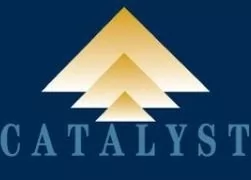I recently re-read Ben Heineman's The Inside Counsel Revolution. As the former General Counsel for General Electric, and a prolific writer, he covered a lot of ground in his book. One section concerned "The Global Legal Organization of the Future". The chapter on "Law Firms and Alternatives" is of particular interest because it is still the best characterization of the continuum of practices and relationships that law departments have had with external counsel that I have seen in 20 years.
Like Stephen Hawkings' A Brief History of Time, Heineman traces the evolution of the corporate law department response to the enigma of relationships with law firms as five different phases stretching over the last 40 years. And it is these five, sometimes overlapping, phases that are worth noting because they give law firms and GCs an idea of when / where they are in the time-space continuum.
The first phase of corporate law department responses is best summed up with the phrase "We hire lawyers, not law firms." As GCs began to populate their law departments with specialists, in turn these individuals selected external counsel in an ad hoc fashion, based on their networks. At the same time, inside counsel began to take on some of the complex work themselves, especially when the critical mass of the law department made it cost-effective to do so. The 1980's was, for some law departments, the beginning of the movement away from being a collection of commercial generalists, acting as sole practitioners. Yet, almost four decades later, smaller law departments still believe that this is the best business model to serve their corporations. Moreover, perhaps encouraged by law firm colleagues, they continue to believe that "you hire the lawyer, and not the firm."
The second phase of responses to managing the relationship with external counsel was to "make competition more systematic," with a clear objective of cost reduction. Outside counsel guidelines were introduced but tended to focus on disbursements. The competitive aspects took the form of invitational requests to a small number of firms to propose fees on a matter-by-matter basis. Over time, informal requests evolved into formal RFPs, and in a few cases, reverse auctions. Blended rates and discounts, both variations of hourly rates, were secured. Invoices became more detailed and task-based. Witness the project to Canadianize the Uniform Task-Based Management System (UTBMS) for three code sets in 1996 and 1997. Institutional consumers of legal services, such as banks, insurance companies, and utilities, did formalize processes. However, they did not systematically negotiate reduced fees, and they did not venture into alternative fee arrangements with the exception of fixed fees for commodity work.
The third phase reflects the transition from the "relational" to the "transactional" retention of external counsel. Heineman refers to the era of lists of "preferred providers". Implicit preferences for law firms and for key lawyers became more explicit so that preferred firms joined a panel list. For more than 20 years, firms on panel lists have complained that beauty contests change nothing in reality. The largest volumes and the most interesting work continue to flow to traditional legal providers. It appears as if relationships and history continue to trump price, assuming that competence among the firms is equal. Law departments do not have the analytical tools and the appetite to parse law firm prices. It follows that they cannot determine how much more they are paying than they could pay to the same firms or to other panel firms. More than 80 % of law departments are operating at phase 2 and phase 3 levels when it comes to retaining external counsel.
Dupont and Pfizer were pioneers in developing strategic alliances (phase four) with far fewer firms. The company commits a volume of work for several years in exchange for a flat annual fee. The conditions must be right if the work is to include complex litigation and transactions. The company secures budget predictability and the firm has regular cash flow. A handful of companies have had such arrangements in place for 10 years, typically as a series of 3-year to 4-year partnering agreements. Adjustment clauses to recognize significant variations in volume and matter complexity are included to minimize the risks of paying too much for the client or incurring a loss for the law firm. Collar arrangements of 15 % are usually sufficient for the firm to secure a predictable flow of work and to stimulate efficiency in the law firm. Some of the concerns arising from these arrangements over time are that service levels will diminish, and that expertise will not be as readily available. Do firms have "B teams?" It followed naturally that fixed fees have evolved into hybrid fees consisting of a fixed fee amount and a variable portion tied to key performance indicators focused on efficiency, effectiveness and innovation. Such arrangements are still rare today.
Heineman describes phase five as the effort by corporate legal departments to "integrate more completely with law firms and make them strategic advisors." Goals and objectives are set for matters as well as for the portfolio of work. Joint legal department and law firm teams select the optimal variation of fees for the matter or perhaps for a book of business. This type of integration extends much further than substantive legal work completed at the request of the "fortress law department." It can incorporate LEAN initiatives, improving relationships with business units in the company, managing the network of local counsel, and preparing detailed trend and management reports regarding legal services delivery.
General Counsel and law firms must agree on the cornerstones for strategic partnering if they are to achieve their full potential.
Originally published by Legal Business World.
The content of this article is intended to provide a general guide to the subject matter. Specialist advice should be sought about your specific circumstances.

